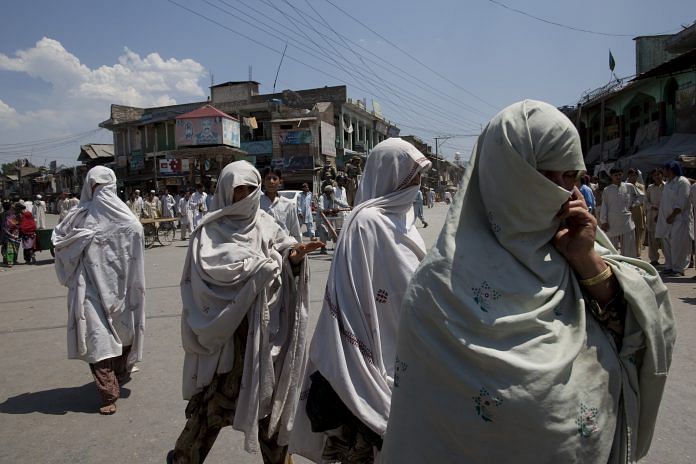Terror outfit operates in the guise of ‘peace committee’ in FATA region, bans cultural activities, women’s movement outside their homes.
Prohibitions on cultural and social activities, music, traditional dance forms, use of narcotic drugs as well as restrictions on women’s mobility — all have made a comeback in Wana, Pakistan, an erstwhile Taliban hotbed.
According to reports in the Pakistani media, Taliban has made a reappearance in this largest town of South Waziristan Agency in Pakistan’s Federally Administered Tribal Areas (FATA) under the guise of a “peace committee”.
The report comes at a time when the country is already engulfed in the larger debate of mainstreaming terror and extremist outfits.
According to the committee’s guidelines, any activity that promotes immorality or violates Islamic teachings would be prohibited. In a series of pamphlets, the committee has particularly banned movement of women outside their homes without male members, warning that any violation could have serious repercussions.
“The movement of women outside their homes has been restricted and they would not be allowed to visit markets and clinics or faith healers without adult male members of their families, including husbands and brothers,” the pamphlets read.
What is also of significance is that the committee is headed by Salahuddin alias Ayubi, a successor of Mullah Muhammad Nazir — an influential Taliban leader, who was killed in a US strike in January 2013.
It was in 2003 that Pakistani Taliban had first appeared in the South Waziristan Agency, the region becoming the hotbed of Talibanisation and Nek Muhammad Wazir emerging as its leader. Gradually, Talibanisation began to spread its roots in other tribal regions along the disputed Durand Line. In fact, the first ever US drone strike in Pakistan was carried out against Wazir, who was ultimately killed in the operation. Unfazed, the Taliban spread to the adjacent Khyber Pakhtunkhwa province – Swat Dir, Buner and suburbs of Peshawar.
The government, however, seems to be wary of taking a clear position on the issue. When the secretary of FATA’s law and order was approached by Dawn to comment on reports of Taliban emerging in Wana, he only expressed ignorance over the issue.
“Are these committees, then, part of those former fighters who have been ‘cleaned’ and slowly incorporated into the mainstream,” asks an editorial in Pakistan Today.
Only last week, six mainstream religious parties in the country — Jamaat-e-Islami, Jamiat Ulma-i-Islam-Fazal, Jamiat Ulma-i-Pakistan-Noorani, Markazi Jamiat Ahle Hadith, Jamiat Ulema-i-Islam-Samiual Haq and Islami Tehreek — decided to revive Muttahida Majlis-e-Amal (MMA) – an ultra-conservative, Islamist, religious, and far-right political alliance, which had dissolved a decade ago.
The alliance has been formed months after two religious outfits — Taheek Labaik Ya Rasul Allah and Jamat-ud-Dawah’s Milli Muslim League — fared well in the by-poll in Lahore’s NA-120.
It is not just the political arena, however, where extremism is spreading its tentacles. Only last month, a report by the Institute of Strategic Studies in Islamabad (ISSI) said that extremism in Pakistani universities is “far more complex and alarming than it appears”.



